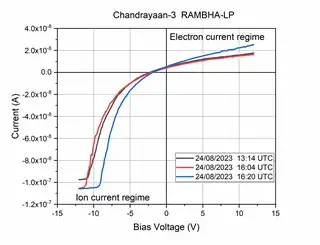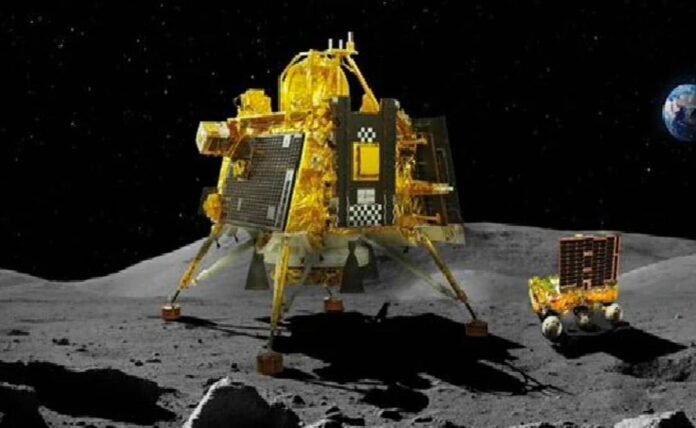August 31, 2023
Hey there, folks! Today, we’ve got something truly out-of-this-world to talk about. We’re taking a journey to the moon, specifically the lunar south polar region, where the Radio Anatomy of Moon Bound Hypersensitive ionosphere and Atmosphere – Langmuir Probe, or RAMBHA-LP for short, is making history. It’s onboard Chandrayaan-3, and it’s all about measuring the plasma content of our lunar neighbor’s surface.
The Stellar Tool: Langmuir Probe on Chandrayaan-3
So, what’s this Langmuir Probe all about? Well, it’s a nifty device designed to help us get to know plasma better. Picture this: a 5 cm metallic spherical probe mounted on a 1-meter boom, jutting out from the upper deck of the Chandrayaan-3 Lander. This probe is named after Irving Langmuir, a legend in the world of plasma physics. It’s the star of the show here.
Now, here’s the cool part. The probe is deployed using a hold-release mechanism after the lander’s touchdown on the moon. This extended boom is not just for show; it’s designed to keep the spherical probe isolated from the lander’s body, ensuring it operates in the undisturbed lunar plasma environment.
Taking Plasma Measurements to the Next Level
RAMBHA-LP is no ordinary probe; it’s got some serious skills. It can detect super tiny return currents, we’re talking pico-amperes here, and it does it in just 1 millisecond. That’s like the blink of an eye in the world of science!
But wait, there’s more. By applying a sweeping bias potential ranging from -12 to +12 volts in tiny 0.1 V increments, this high-tech system can precisely determine the densities and energies of ions and electrons. In simpler terms, it’s like the probe’s own little language for chatting with the moon’s plasma.
Moon’s Plasma: A Sneak Peek
So, what did RAMBHA-LP find out there in the lunar plasma-sphere? Well, it seems that the plasma near the moon’s surface is somewhat sparse. We’re talking about a number density of roughly 5 to 30 million electrons per cubic meter. Sounds like a lot, but in the grand scheme of space, it’s quite thin.
Now, here’s the catch: these findings are all about the early stages of lunar daytime. The probe isn’t taking a coffee break; it’s hard at work, continuously observing and exploring the changes happening in the near-surface plasma as the lunar day progresses. This is gold when it comes to understanding how the moon charges up, especially when dealing with the wild fluctuations in solar space weather conditions.


The Brains Behind RAMBHA-LP
Before we wrap up this lunar adventure, let’s give credit where it’s due. The brainpower behind RAMBHA-LP’s development comes from the Space Physics Laboratory (SPL) at the Vikram Sarabhai Space Centre (VSSC) in Thiruvananthapuram. These folks have truly outdone themselves, taking us one step closer to unlocking the mysteries of our lunar neighbor.
So there you have it, folks. RAMBHA-LP and Chandrayaan-3 are teaming up to give us the lowdown on the moon’s plasma like never before. Stay tuned for more lunar adventures and groundbreaking discoveries, as we continue to explore the final frontier right from our blue planet.

